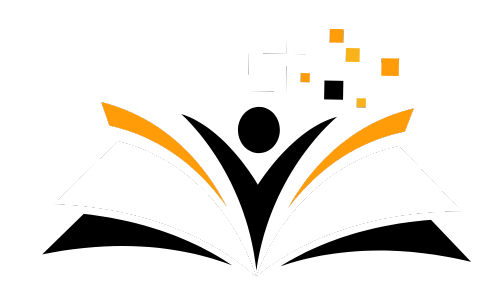Introduction
Studying doesn’t have to be dull or repetitive. In fact, combining creativity with proven memory techniques can dramatically improve learning outcomes. Flashcards and mind maps are two of the most effective tools students can use to enhance memory, focus, and retention. When designed with a creative twist using quality stationery from Study Crafters, these tools become even more powerful. In this blog, we will explore how to make DIY flashcards and mind maps, why they work so well, and how to use them for smarter, more engaging study sessions.
What Are Flashcards and Mind Maps?
Flashcards
Flashcards are a classic study tool consisting of small cards with a question on one side and the answer on the other. They’re ideal for memorization and quick reviews.
Mind Maps
Mind maps are diagrams used to visually organize information. Starting from a central idea, branches represent related topics and subtopics, helping learners grasp complex ideas more easily.
Why Use Flashcards and Mind Maps?
Benefits of Flashcards
Active recall: Encourages memory retrieval.
Spaced repetition: Helps with long-term retention.
Portability: Study anywhere, anytime.
Customizable: Tailor content based on your syllabus.
Benefits of Mind Maps
Visual learning: Great for visual learners.
Better comprehension: Links concepts clearly.
Boosts creativity: Engaging and fun to create.
Organized thinking: Structures your study notes.
Creative Flashcard Ideas Using Study Crafters Supplies
1. Color-Coded Flashcards
Use Study Crafters’ colored index cards or highlighters to color-code subjects or topics. For example:
Blue for Science
Red for History
Green for Math
2. Illustrated Flashcards
Add small doodles or sketches to your flashcards. This is especially helpful in subjects like biology or geography.
3. Themed Flashcards
Use washi tape, stickers, or decorative borders from Study Crafters to personalize your cards. It’s fun and makes revision more inviting.
4. Flashcard Rings
Punch a hole in each flashcard and loop them with a binder ring to create portable flashcard decks by topic.
5. Flashcard Apps + Handmade Cards
Combine digital with traditional by syncing your flashcard topics with apps like Anki or Quizlet, but rely on your handmade flashcards for active learning sessions.
How to Use Flashcards Effectively
Spaced Repetition
Review flashcards over increasing intervals (e.g., 1 day, 3 days, 7 days) for better memory retention.
Shuffle and Quiz
Shuffle cards regularly and practice testing yourself. Ask a friend or family member to quiz you.
Use Both Sides
Include questions, keywords, or definitions on one side and detailed answers on the other.
Keep Sessions Short
Study in 20–30 minute intervals for better focus.
DIY Mind Maps with a Creative Twist
1. Start with a Central Idea
Use a bold marker or brush pen from Study Crafters to write your main topic in the center of a blank sheet or whiteboard.
2. Branch Out with Keywords
Use different colored pens for each branch. Write short keywords instead of long sentences.
3. Add Visuals
Draw icons, arrows, or small diagrams to help visualize the content. Use color pencils or brush pens to make it pop.
4. Use Sticky Notes
Write subtopics on sticky notes. This makes your mind map flexible—you can rearrange notes and explore different connections.
5. Organize with Washi Tape
Create borders or sections using Study Crafters’ washi tape. It adds a creative flair and helps organize information.
How to Use Mind Maps Effectively
One Topic per Map
Avoid clutter by focusing each map on a single topic or chapter.
Connect Ideas
Draw arrows or lines to show how different ideas relate. This boosts understanding and recall.
Use During Revision
Mind maps are perfect for quick summaries and last-minute reviews.
Combine with Flashcards
After creating a mind map, convert its keywords into flashcards for deeper learning.
Best Stationery for Flashcards & Mind Maps (From Study Crafters)
Index Cards – Ideal for DIY flashcards
Highlighters – For color-coding
Sticky Notes – Great for dynamic mind maps
Brush Pens – Make your mind maps artistic
Rulers & Sketch Pens – Organize and beautify your study materials
Washi Tape & Stickers – Add fun and creativity
Tips to Make DIY Study Tools More Effective
Keep it Simple – Don’t overcrowd your cards or maps.
Be Consistent – Use the same color schemes and symbols.
Review Often – Make flashcards and mind maps a regular part of your study routine.
Have Fun – The more creative you are, the more likely you are to engage with the material.
Real-Life Results: How Students Use These Tools
Many top-performing students swear by flashcards and mind maps. These tools are especially helpful for:
Language learning (vocabulary flashcards)
Science subjects (conceptual mind maps)
History and geography (event maps and timelines)
By integrating creativity into these techniques with quality stationery from Study Crafters, students report higher motivation, improved focus, and better retention of material.
Conclusion
DIY flashcards and mind maps are powerful tools that combine active recall, visual learning, and creativity to enhance your study sessions. With the right stationery and a little imagination, you can transform your notes into fun, colorful, and effective study aids. Explore the wide range of supplies at Study Crafters and make studying something to look forward to.
